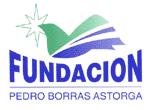Matti Kuusi was introduced into paremiology by collecting materials and producing the anthology of old Finnish proverbs in the beginning of the 1950s. He chose the thematic presentation of the materials which led him to study the world view of proverbs. At the same time he made his ‟paremiological experiment” experimental study how proverbs are chosen and used by people in certain situations.
Global comparative research was started with the monograph ‟Regen bei Sonnenschein”. The viewpoint was of the traditional historical-geographical school: what could be general lines of evolution of this saying. In that study Kuusi consciously distanced himself from the contextual cultural-anthropological study of a village or other identifiable group. Later Kuusi made another kind of a methodological experiment: proverbs as clues to the former existence of poetry in Kalevala metre in various parts of Karelia and Finland. A long project jointly with Estonian paremiologists was started in 1960s: ‟Proverbia septentrionalia”, analysis of 900 most common Baltic-Finnic proverb types had its background in the geographical-historical school.
Behind all these projects was the long distance aim: creation of an international type system of proverbs, which took shape in 1970s and was finished in 1990s with the assistance of Outi Lauhakangas. As a by-product came the anthology of the proverbial wisdom of the world (in Finnish) with its ultimate question: is there a single source of all this tradition?
Matti Kuusi was, after all, the man of the old Finnish school, and questions of origin and development were the most interesting to him. Nevertheless, he opened many perspectives for innovative research and various approaches in paremiology.










